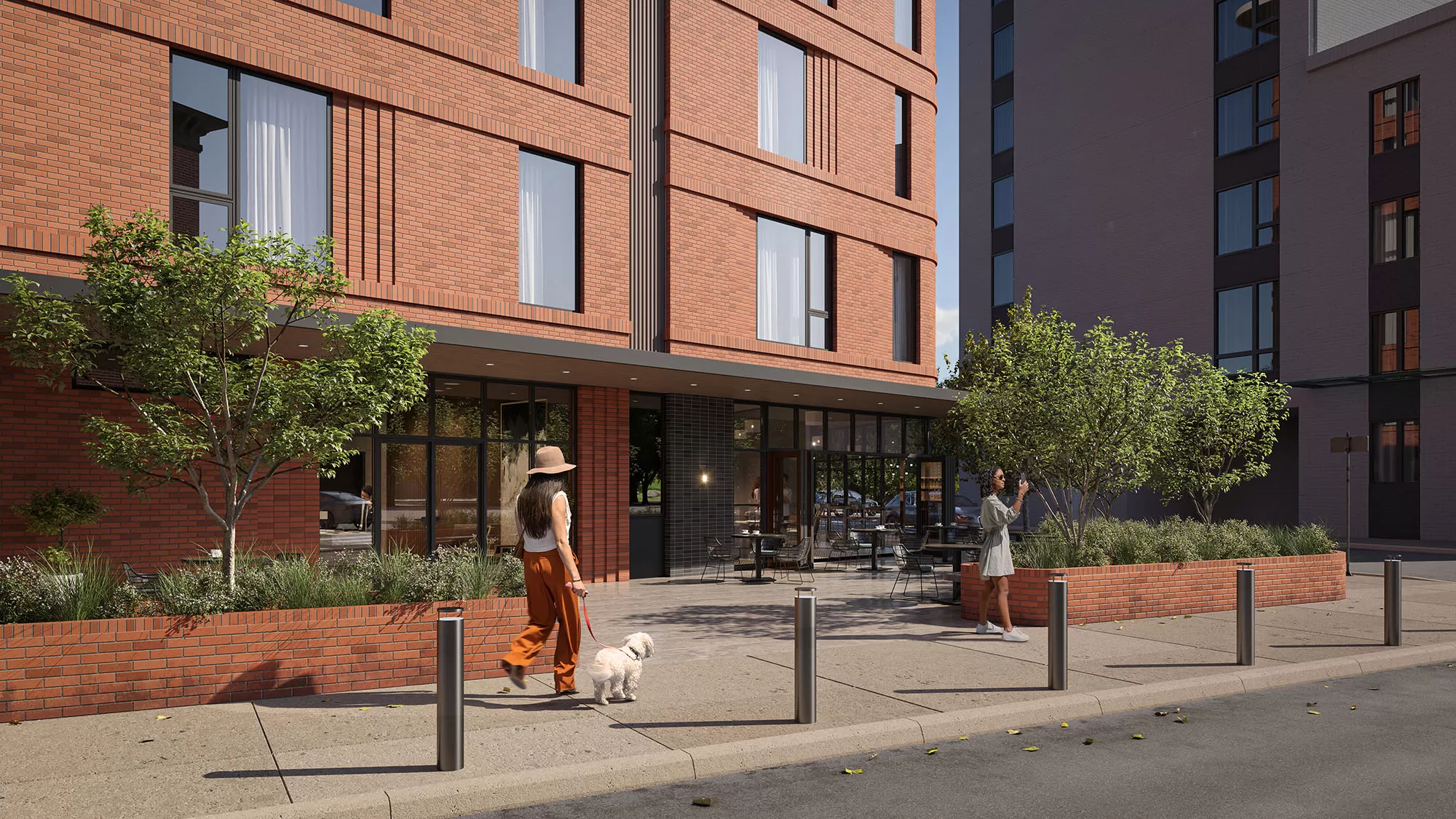In architectural exterior rendering, the angle of view plays a significant role in shaping how a building or space is perceived. For architects, real estate developers, and construction companies for whom it’s necessary to showcase their designs, and ideas for potential buyers, the choice of perspective is a key factor. Angles used in architectural exterior renderings can shape first impressions, convey various qualities, and, in the end, influence opinions on a project and the market price generally.
The Power of the Angle
When creating architectural exterior renderings, it’s essential to use correct angles to spotlight buildings and spaces, ensuring a comprehensive showcase of every detail. Each provides unique advantages. Let’s closely meet to the factors that can highlight your project among others and increase visibility.
Eye-Level Perspective
- What is? The eye-level perspective is creating a render at the horizontal level, according to your point, so everyone who views it is forced to accept your eye level. We use eye level to control how we want people to see things.
The significance point for your project: This viewpoint, mirroring the vantage point of a person’s eyes, offers a realistic and relatable experience that resonates with viewers. In residential and luxury real estate projects, as well as shopping areas, the eye-level perspective allows stakeholders to envision themselves within the space, fostering a deep connection. It effectively conveys the project’s scale, proximity to amenities, and the ambiance of the surrounding environment, providing a comprehensive understanding of the project’s appeal.
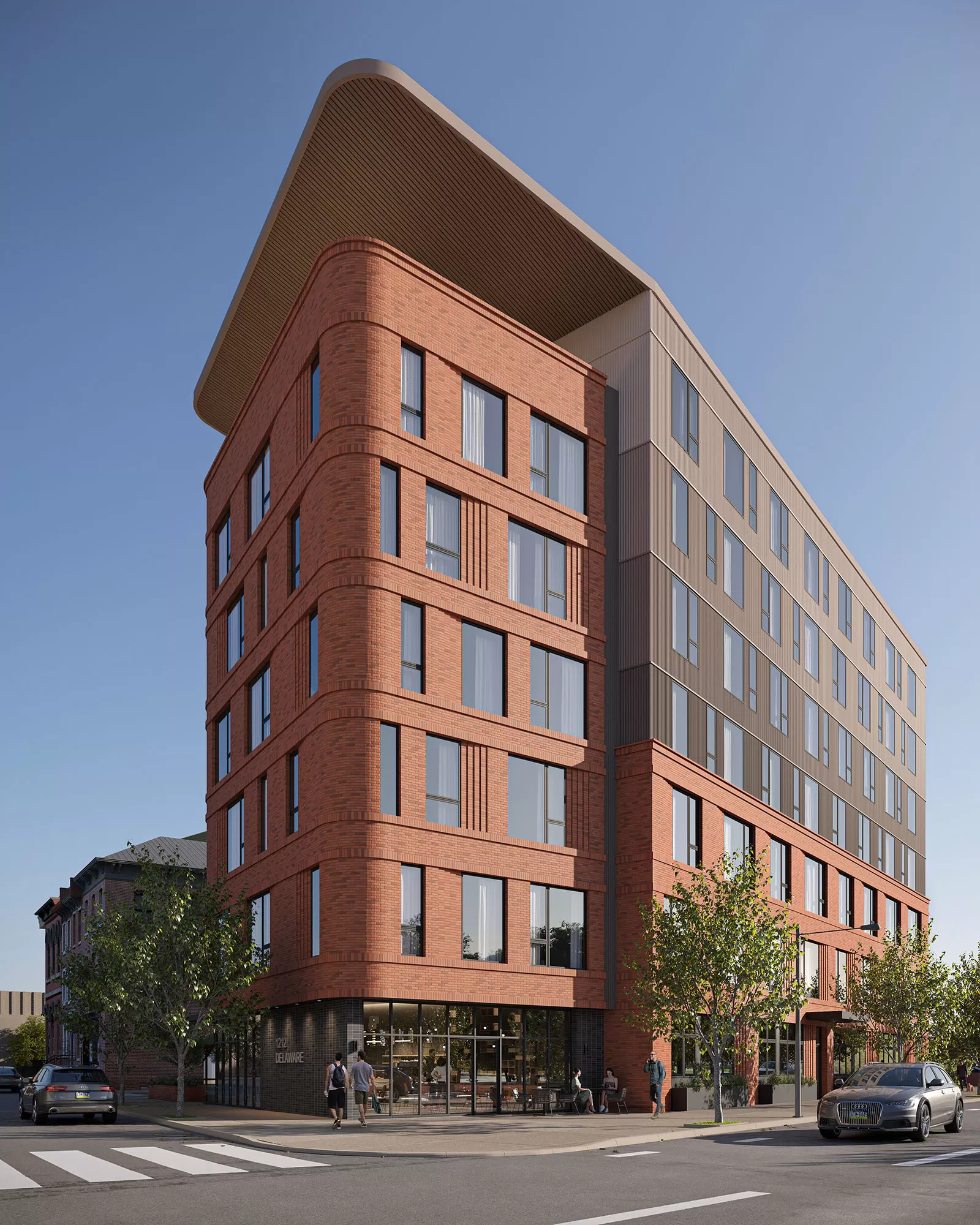
Semi Aerial View
- What is? A semi-aerial view is a perspective of viewpoint in architectural rendering that captures from an elevated position, above eye level. This angle provides a mid-level perspective, usually created from a few stories above ground, allowing to see the subject from an elevated position, but maintain connection to the ground.
- The significance point for your project: This angle is invaluable for development properties and landscaping, as it allows viewers to appreciate how the project integrates with its surroundings and the relationship between various components of the site. The mid-level perspective provides a unique advantage by allowing a clear view of the subject. For construction projects and real estate developments, it visualizes integration, layout, and planning, to showcase the project’s relationship with existing infrastructure and natural elements. When presenting to clients and marketing projects, it opens up a well-rounded view, making it easier to envision the project in its intended location.
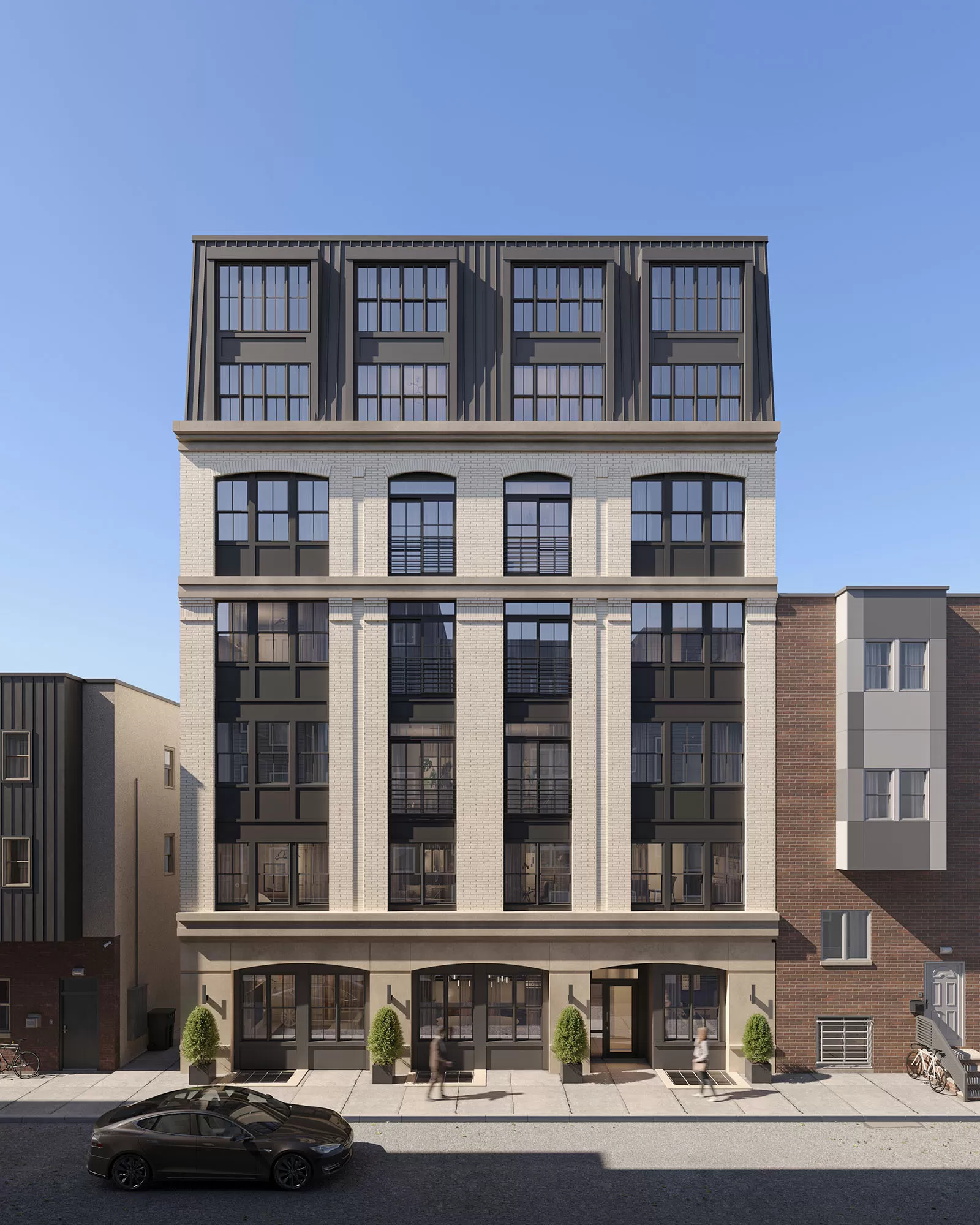
Aerial View
- What is? The bird’s-eye perspective is the technique of crafting an illusion of depth that portrays objects from a distance above. It is usually used for a landscape or a cityscape. (Aerial view and aerial perspective are not the same thing.)
- The significance point for your project: The aerial architectural exterior render angle is the best way to show the actual size of the property, as it’s seen next to surrounding buildings, and landscape. It allows architects and developers to present their projects with an emphasis on scale, especially for high-density areas, providing a district or neighborhood glimpse providing a clear understanding of the project. Furthermore, it gives a decisive competitive edge over businesses that still use ground-level shots, and be more cost-efficient, as 3D renderings are easier and less expensive to modify.
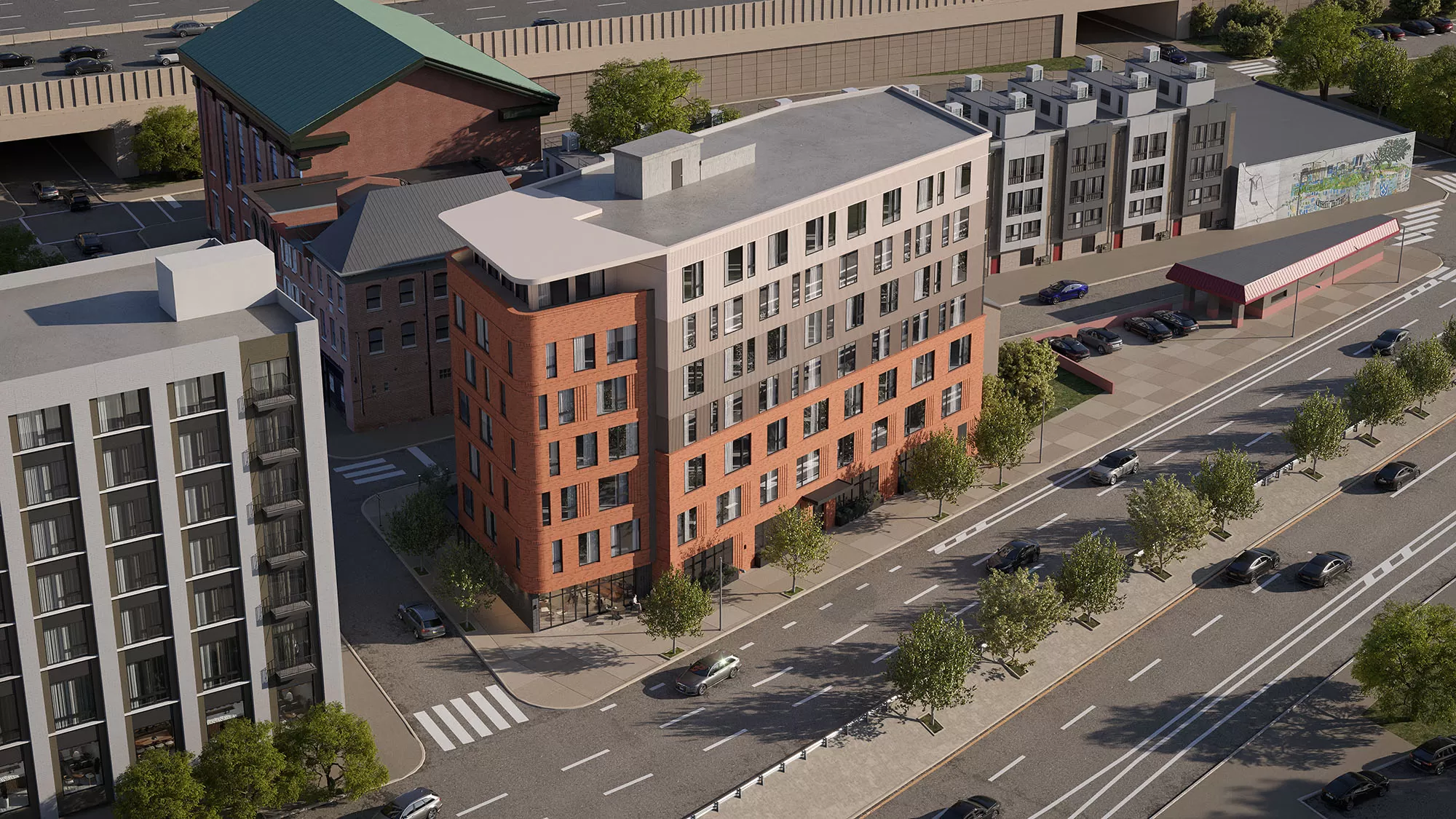
Master Plan View
- What is? Master Plan View is a comprehensive vision that outlines the long-term goals, that harmonize all elements strategies, and guidelines for the development of a large area, such as a campus, a district, or a city. A master plan provides a long-term overview of your organization’s growth and development. It outlines future building projects, breaks down budget requirements, and helps you secure and allocate funding.
The significance point for your project: The Master Plan is critical for urban architects and planners, it’s an indispensable tool in the execution of large-scale projects. It outlines future projects, aids in making well-informed land use and zoning decisions, adhering to regulations, breaks down budget requirements, and helps you secure and allocate funding. Developing a solid plan early on could mean fewer changes during the project, which are expensive and take time. Without a master plan, you might have people trying to put a door in a wall that hasn’t yet been made. A master plan is a map of the success of a project.

Worm’s Eye View
- What is? The Worm’s Eye View represents an extremely low perspective looking up from near ground level. This angle mimics the view of a worm, ant, or small creature glancing upwards. Architectural exterior rendering uses it to craft the building facades to reach impressively into the sky. The upward glimpse creates a sense of grandeur and accentuates the height. This type of angle works well for skyscrapers, towers, and other tall structures that make the architecture seem aspirational.
- The significance point for your project: For architects, the Worm’s Eye View helps showcase height and vertical form. Real estate developers can use it to highlight soaring towers within a new project. Construction firms can emphasize the imposing stature of newly built structures. The Worm’s Eye View selectively positions the viewer to look up in awe. By smartly leveraging this perspective, it’s great to impressive scale and increase attraction to the project.
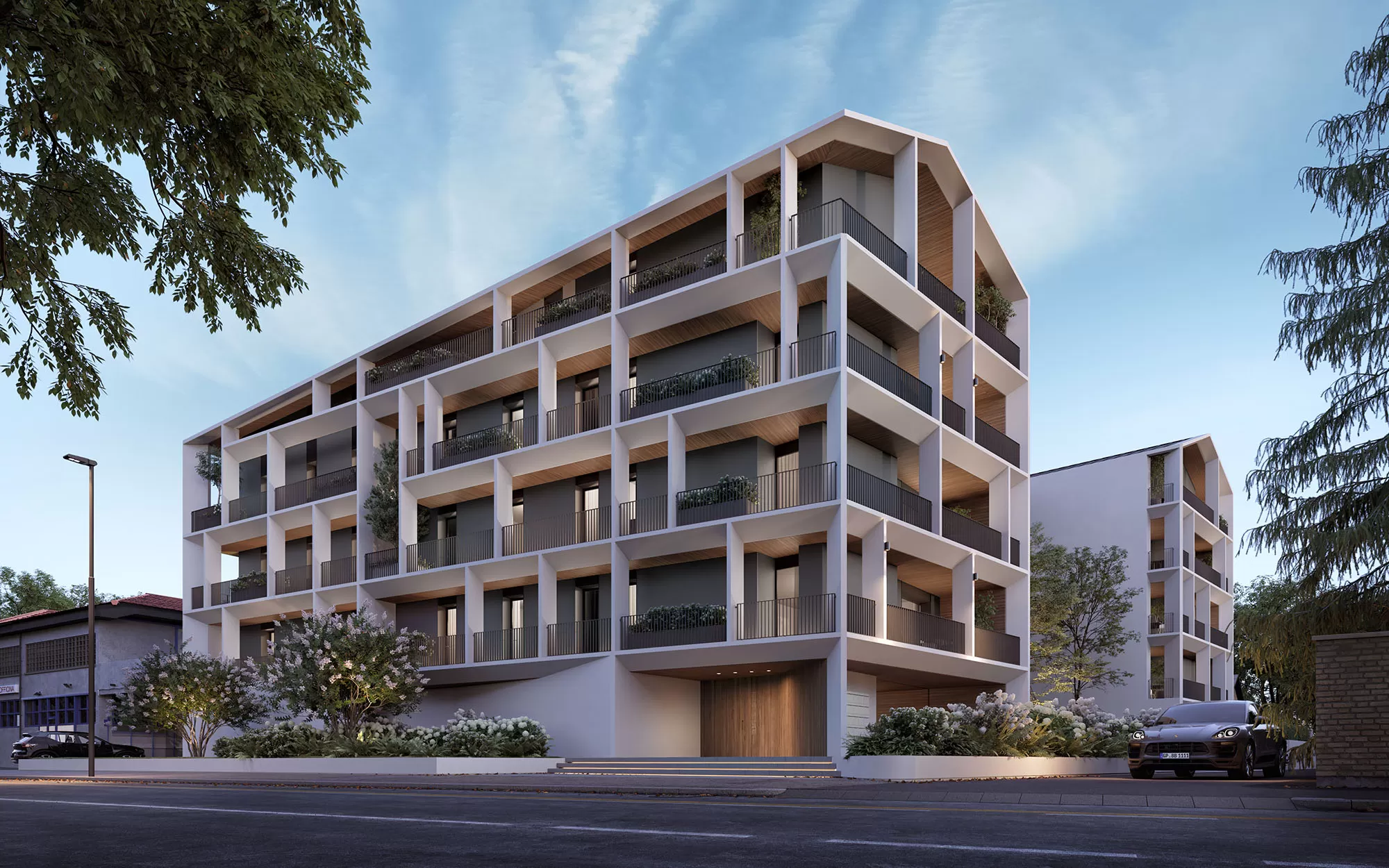
Close-up View
- What is? Close-up View It’s a view from a small distance, more intimate, that enables viewers to connect emotionally with the design. Close-up perspectives are essential for highlighting architectural details, materials, and design features. It’s perfect for showcasing intricate craftsmanship, ornamental elements, and textures. Close-up architectural exterior render angles bring out the finer aspects of the project that might go unnoticed in wider shots.
- The significance point for your project: Architectural exterior rendering in Close-up angles is an essential tool for architects, real estate developers, and construction professionals, as it helps emphasize details, establish emotional connections, evaluate design quality, enhance marketing materials, and create compelling visuals that draw attention. It plays a pivotal role in ensuring that the finer aspects of the project are appreciated, contributing to the success and marketability of the design.

Summary
In the world of architectural exterior rendering, thoughtful angle selection is key. The perspective profoundly impacts the psychology and perception of the design. While eye level creates immersion and close-ups provide detail, aerial views offer efficient overviews. By leveraging angles from low to high vantage points, stakeholders can showcase their building visions to best advantage. The choice of angle should align with the project’s objectives and target audience.
Freedes Studio gladly will help to elevate your architectural exterior project, with the correct angles to enhance market visibility and highlight the uniqueness of your concept.

